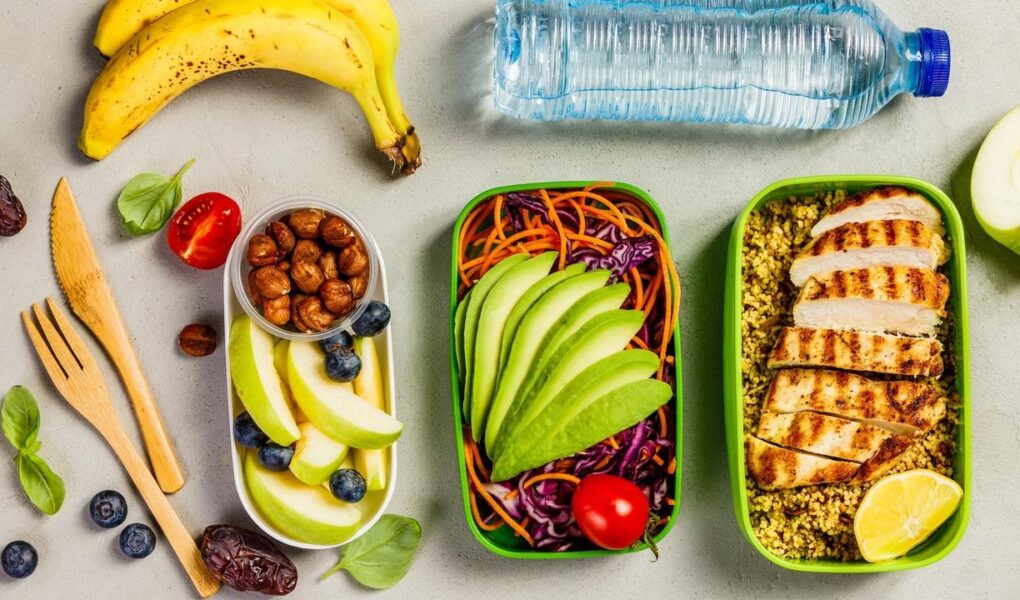The keto diet is a low-carbohydrate diet based on eating foods high in fat. The main thing is to include a lot of fats and as few carbohydrates as possible in your diet. The lack of carbohydrates causes a decrease in blood insulin levels and depletion of glucose stores, which forces the body to look for another source of energy. In the process of searching, it discovers fat reserves and gradually switches to them. As fats are burned in the liver, ketones are released.
The Food Pyramid of the Keto Diet
The keto diet is characterized by the consumption of foods high in fat. Whereas a normal diet includes approximately 45-65% carbohydrates, 10-35% protein and 20-30% fat, a ketogenic diet consists of 70-75% fat, 20-25% protein and 5% carbohydrates. It makes sense to take a closer look at the main features of the keto diet pyramid.
Carbohydrates
As we have already mentioned, in the custom keto diet the consumption of carbohydrates is limited. Carbohydrates consist of one or more sugar molecules called saccharides. Depending on the amount of sugars, carbohydrates are divided into different categories.
Protein
Protein is the building block of the body. They provide growth not only for muscles, but also for hair, nails, various organs, heart, and brain. They can also be used as a source of energy, but their main function is to build and repair muscle tissue.

A decrease in protein intake can lead to a decline in athletic form and muscle mass. Therefore, in the keto diet, as in any other diet, it is important to get enough protein, but not to overdo it. Protein contains amino acids, which in the process of gluconeogenesis can be converted into glucose, which is not necessary for us, of course. So, proteins are essential for the body, but it is important not to get too much or too little of them.
Fats
Fats are the most important source of energy in the keto diet. So it is not unreasonable to go into more detail about what fats you have now and what fats you should be consuming. Most of us know that fats come in saturated and unsaturated, but what does that mean? To explain it, let’s examine their molecular composition.
Saturated and unsaturated fats
A fat molecule can contain from 2 to 80 carbon atoms. Each carbon atom can combine with 4 other atoms. Two of them are always adjacent carbon atoms. And the two remaining compounds determine whether the fatty acid is saturated or unsaturated. If hydrogen atoms are adjacent to them, the compounds are saturated. If not, they remain unsaturated.
Assortment of foods for the keto diet
- Meat: red meat, steak, sausage, bacon, chicken and turkey.
- Fatty fish: such as salmon, trout, tuna, and mackerel.
- Eggs: Choose farm or omega-3-containing eggs.
- Butter and cream: choose organic products if possible.
- Cheese: unprocessed cheese (cheddar, goat, cream, blue or mozzarella).
- Nuts and seeds: almonds, walnuts, hemp seeds, pumpkin seeds, chia seeds, etc.
- Useful oils: especially olive oil, coconut oil, and avocado oil.
- Avocados: eat them alone or make salads, sauces, and snacks with them.
- Low-carb vegetables: most green vegetables, tomatoes, onions, peppers, etc.
- Spices: you can use salt, pepper and various healthy herbs and condiments.
Dehydration in the keto diet
Some people believe that ketosis leads to increased fluid loss and can lead to dehydration and dyselectrolytemia (leaching of salts and electrolyte imbalance in the body) Yes, in ketosis the body needs more fluid, but if the proper amount of water is consumed, there is no problem.

Disadvantages of the keto diet
- At the first stages of following the diet dehydration is possible and as a consequence disruption of electrolyte balance of the body, so depending on how you feel it is necessary to drink more water, possibly brines.
- Lack of some vitamins and minerals because of the limitation of carbohydrates: it can be compensated by vitamin and mineral supplements and dietary supplements.
- The need for tests and consultation with a doctor before starting a diet. However, this applies to any diet: in order not to harm your body, you need to be aware of its condition and special needs.
Everyone has their own goals when choosing a keto diet. However, some of its results have a positive effect on most people. In the initial stage, undesirable side effects can certainly occur. Apathy and decreased rate of reaction may occur in the first few days or even weeks. You may also experience bad breath during this time. A lot of toxins accumulate in fat, and when these fats are burned, the liver has to process them. This is a temporary phase, and you have to get over it. When your body rebuilds, the fatigue and bad breath will disappear and your reaction rate will recover. If fatigue persists for a long time, it may be due to a lack of salt.



